OUR SUSTAINABILITY JOURNEY
From reducing store-bought plastic milk carton waste, to offering our customers home compostable packaging, doing our part to help create a cleaner, greener planet is important to us here at Almond Cow. We’re dedicated to minimizing our impact on the planet at each step in our journey, from manufacturing to recycling.
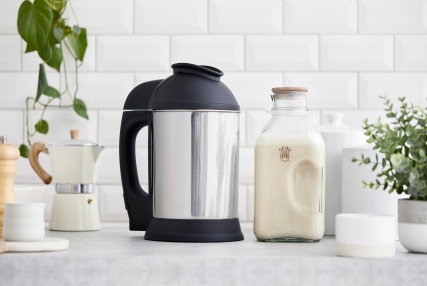
THE PROBLEM WITH SINGLE-USE CARTONS
Annually, close to 70% of plastic cartons go to landfills, or worse, end up in the ocean. An estimated 8 million metric tons of plastic ends up in the ocean each year. From manufacturing to transport to disposal, store-bought milk is one-directional, linear consumption.
Making your own milk eliminates the use of plastic cartons you find in store, helping to reduce the amount of waste that ends up polluting our planet. By switching to Almond Cow, each family prevents about 72 plastic cartons from being purchased and tossed out over the course of a year.
Your Almond Cow alone can prevent 500+ single-use cartons from polluting our planet. As a conservative estimate, you, with thousands of others in the Almond Cow community, have prevented 28 million single-use cartons from entering our landfills and oceans.
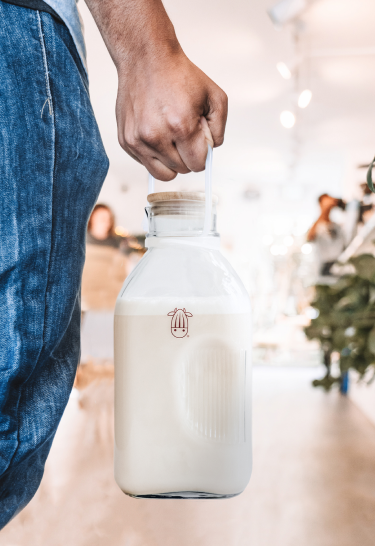
WHAT’S NEW
We recently updated a significant portion of our ingredient packing to be 100% home compostable. Since home compostable is the highest compostable designation a package can get, that means it is fit for home, industrial, and municipal composting.
If you don’t have access to municipal services, you can place the package in your backyard compost pile and it should degrade safely within a year (dependent on conditions).
We have also partnered with how2recycle, a new initiative focused on taking the confusion out of recycling. These labels have clear instructions on how to (and in some cases, how not to) recycle different packaging types. A more thoughtfully sorted recycling bin means more products will actually get recycled, and a better world for all of us.
And finally, as compared to this time a few years ago, we have reduced our plastic packaging usage by .3% per machine. This may not seem like a lot, but even this small change will prevent hundreds of pounds of CO2 from polluting our atmosphere this year alone. This also means less waste going into our landfills.
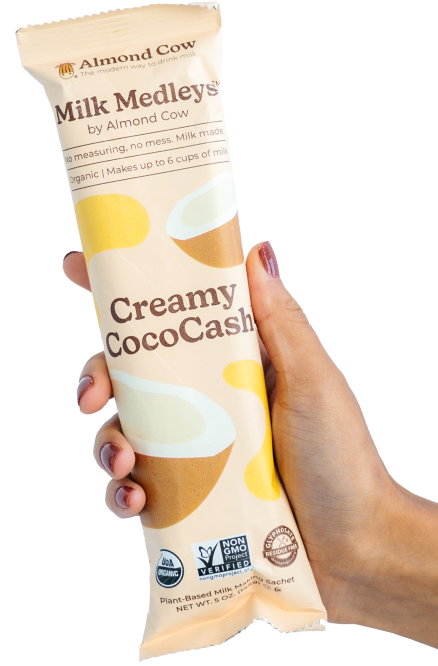
WHAT’S NEW
We recently updated a significant portion of our ingredient packing to be 100% home compostable. Since home compostable is the highest compostable designation a package can get, that means it is fit for home, industrial, and municipal composting.
If you don’t have access to municipal services, you can place the package in your backyard compost pile and it should degrade safely within a year (dependent on conditions).
We have also partnered with how2recycle, a new initiative focused on taking the confusion out of recycling. These labels have clear instructions on how to (and in some cases, how not to) recycle different packaging types. A more thoughtfully sorted recycling bin means more products will actually get recycled, and a better world for all of us.
And finally, as compared to this time a few years ago, we have reduced our plastic packaging usage by .3% per machine. This may not seem like a lot, but even this small change will prevent hundreds of pounds of CO2 from polluting our atmosphere this year alone. This also means less waste going into our landfills.
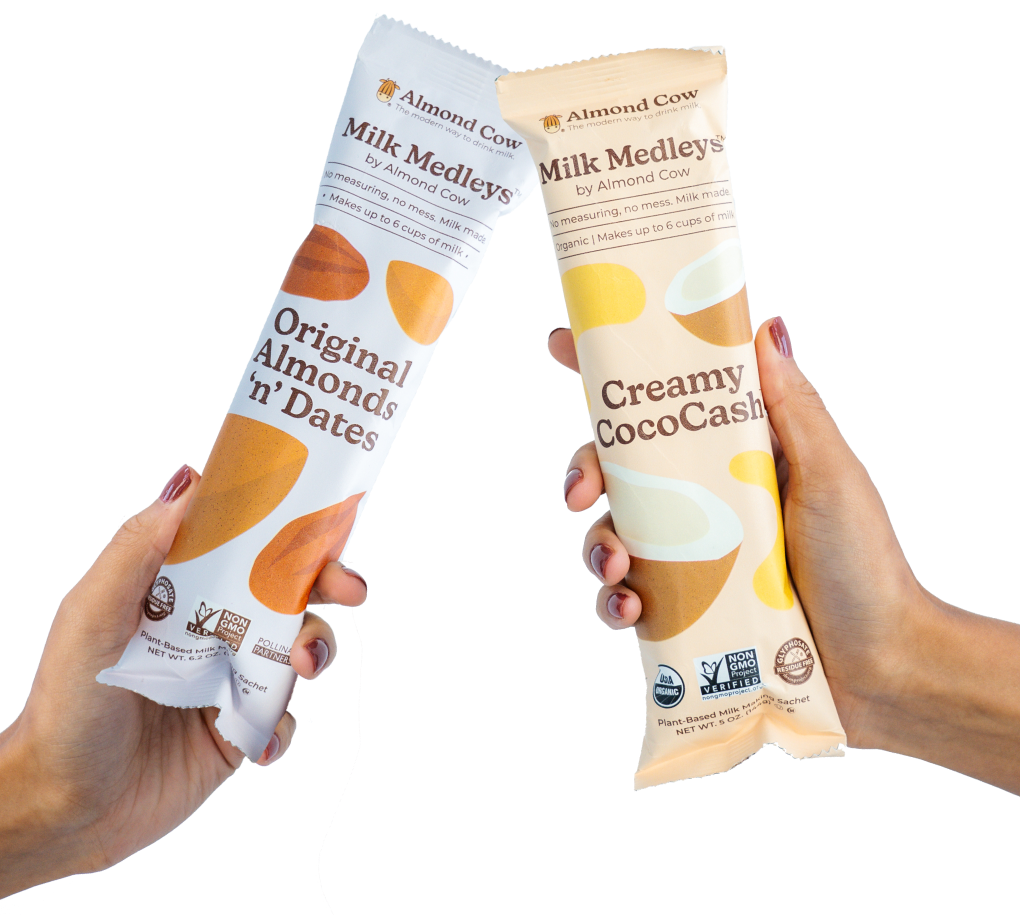
THE STATS
The production of an Almond Cow generates roughly the same amount of CO2 as using 2.7 gallons of gas. When compared against the average of buying two cartons of store-bought unsweetened almond milk a week, the average user can offset the carbon emissions of the production and transportation of an Almond Cow in just 2.25 months!
We calculated that ~0.11lb CO2/Cup is generated when making almond milk and 0.08lb CO2/Cup for oat milk. In comparison, 0.7 lbs CO2/Cup is produced to make dairy milk.
Over its lifetime, your Almond Cow will eliminate the need for 2,750lbs of CO2 to be released into our atmosphere versus a shelf milk equivalent. That’s 1,379lbs of coal that will never need to be burned.
Once you’ve used your Almond Cow ~90 times for almond milk or ~106 times for oat milk, your carbon emissions are estimated to break even versus the shelf packaged equivalent. This is because once you begin making milk at home, the potential drivers of carbon emissions are greatly reduced.
THE STATS
The production of an Almond Cow generates roughly the same amount of CO2 as using 2.7 gallons of gas. When compared against the average of buying two cartons of store-bought unsweetened almond milk a week, the average user can offset the carbon emissions of the production and transportation of an Almond Cow in just 2.25 months!
We calculated that ~0.11lb CO2/Cup is generated when making almond milk and 0.08lb CO2/Cup for oat milk. In comparison, 0.7 lbs CO2/Cup is produced to make dairy milk.
Over its lifetime, your Almond Cow will eliminate the need for 2,750lbs of CO2 to be released into our atmosphere versus a shelf milk equivalent. That’s 1,379lbs of coal that will never need to be burned.
Once you’ve used your Almond Cow ~90 times for almond milk or ~106 times for oat milk, your carbon emissions are estimated to break even versus the shelf packaged equivalent. This is because once you begin making milk at home, the potential drivers of carbon emissions are greatly reduced.
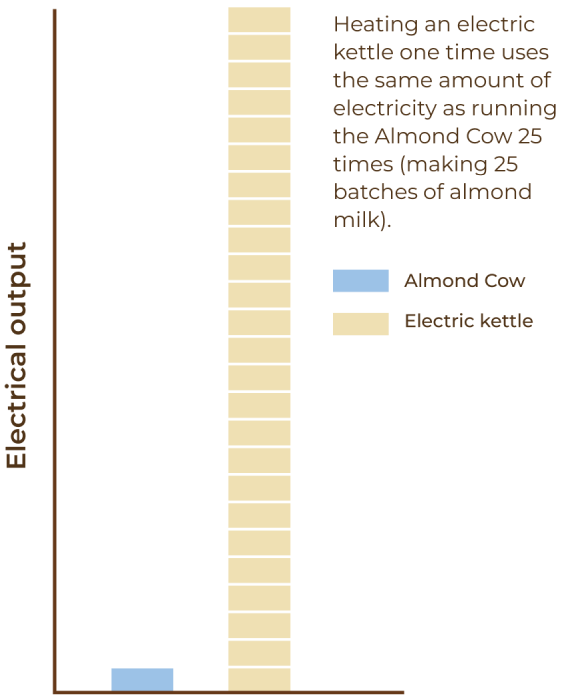
Sources: oceanservice.noaa.gov, scmp.com/better-life/environment, aquatell.ca, epa.gov, southseattleemerald.com, epa.gov/energy/greenhouse-gas-equivalencies-calculator, epa.gov/energy, Townsend v. Blue Diamond Growers


